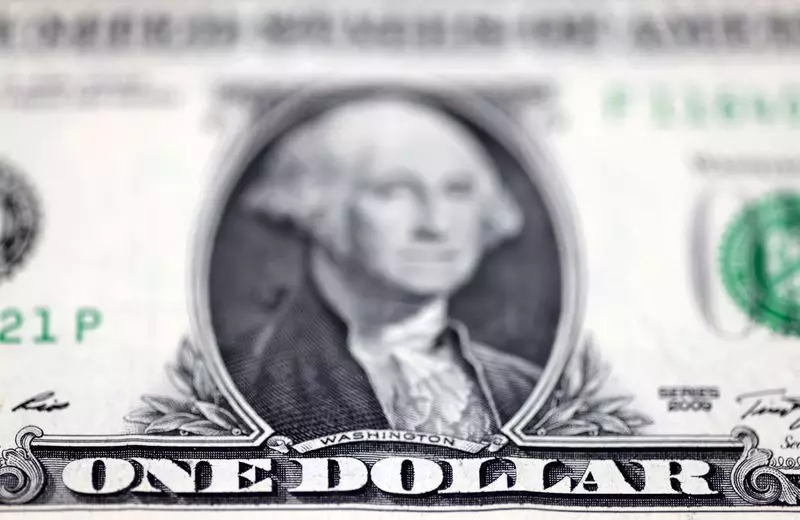In recent weeks, the U.S. dollar has demonstrated remarkable resilience against major currencies, drawing the attention of investors and financial analysts alike. As the market tries to decipher the implications of President-elect Donald Trump’s economic policies and the Federal Reserve’s trajectory on interest rates, the greenback’s adventures in the forex market reveal a complex interplay of factors. The dollar’s recent surge, post-U.S. presidential elections, signifies not only a response to political changes but also reflects deeper economic sentiments that warrant a thorough examination.
Following the U.S. presidential election on November 5, the dollar has appreciated by more than 2%. This escalation stems from speculations that Trump’s policies may stoke inflationary pressures, which could consequently affect the Federal Reserve’s monetary policy decisions. Specifically, the expectation of less aggressive interest rate cuts adds an intriguing layer to the dynamics, pressuring the dollar index to climb higher. Traders, confronted with this uncertainty, find that shorting the dollar is quite challenging, as sentiment surrounding future Fed policies only seems to strengthen the dollar’s position.
The possibility of the Federal Reserve maintaining or adjusting its interest rate cut expectations has further complicated market dynamics. As of now, the market remains split on the chances of a rate cut at the upcoming December meeting, reflecting shifting sentiments that could reshape trading strategies moving forward.
Economic analysts have grown cautious regarding the U.S. inflation outlook linked to Trump’s anticipated trade tariffs, which could significantly affect global markets. If tariffs become a central feature of Trump’s administration, Europe and China find themselves bracing for potential economic fallout, with the dollar gaining strength at least in part due to these geopolitical tensions. The uncertainty surrounding U.S. trade relations presents a mixed bag for investors as they wrestle with the implications for both domestic and international economic landscapes.
In this context, the euro’s performance against the dollar has come under pressure, as the currency fell to levels not seen since October 2023. Citing ramifications from the ongoing Russia-Ukraine conflict, which also threatens to exacerbate inflationary pressures, analysts are pointing to geopolitical risks as another set of adverse influences on the euro, essentially providing a “bullish cue” for the dollar’s continued strength.
In the Asian market, the U.S. dollar has also found its footing against the Japanese yen, although fluctuations have been observed. The dollar’s movement, which saw it breach the 156 mark last week, raised alarms regarding potential intervention by Japanese authorities to stabilize their currency. As Japan grapples with its own economic challenges, the focus shifts to Bank of Japan Governor Kazuo Ueda’s statements for hints of future monetary policy adjustments. Market observers are keenly analyzing Ueda’s comments, speculating on possible rate hikes despite the yen continuing its downward trajectory.
As the Bank of Japan potentially contemplates a more hawkish stance, reacting to external pressures will be pivotal. Yet, the environment remains turbulent, and contrasting economic signals from the U.S. are creating a mosaic of complexity for investors.
Over in the U.K., the British pound experienced minor gains against the dollar, seemingly supported by rising inflation figures that exceed the Bank of England’s targets. These developments suggest a cautious stance from the central bank, as policymakers grapple with the balancing act of controlling inflation while nurturing economic growth. Coupled with dollar movements, the interplay between fiscal policies and economic indicators will likely keep the British pound in a delicate state.
Interestingly, the cryptocurrency market has not been left untouched by this broader economic narrative. Bitcoin and other digital assets have enjoyed a resurgence, fueled by optimism that a shifting regulatory landscape under Trump’s administration might favor the cryptocurrency community. This reflects a growing integration of crypto-assets into the mainstream financial discussions, showcasing investor sentiment that extends beyond conventional currency considerations.
Overall, the current landscape indicates that the U.S. dollar’s steadfastness is a reflection of multifaceted economic dynamics shaped by political uncertainty, anticipated inflation, and global trade intricacies. Investors remain vigilant as they navigate these waters, seeking clarity amid the noise of policy announcements and economic data releases. As we move forward, the interplay among these factors will undoubtedly define the dollar’s trajectory and, by extension, the health of the global economy.

